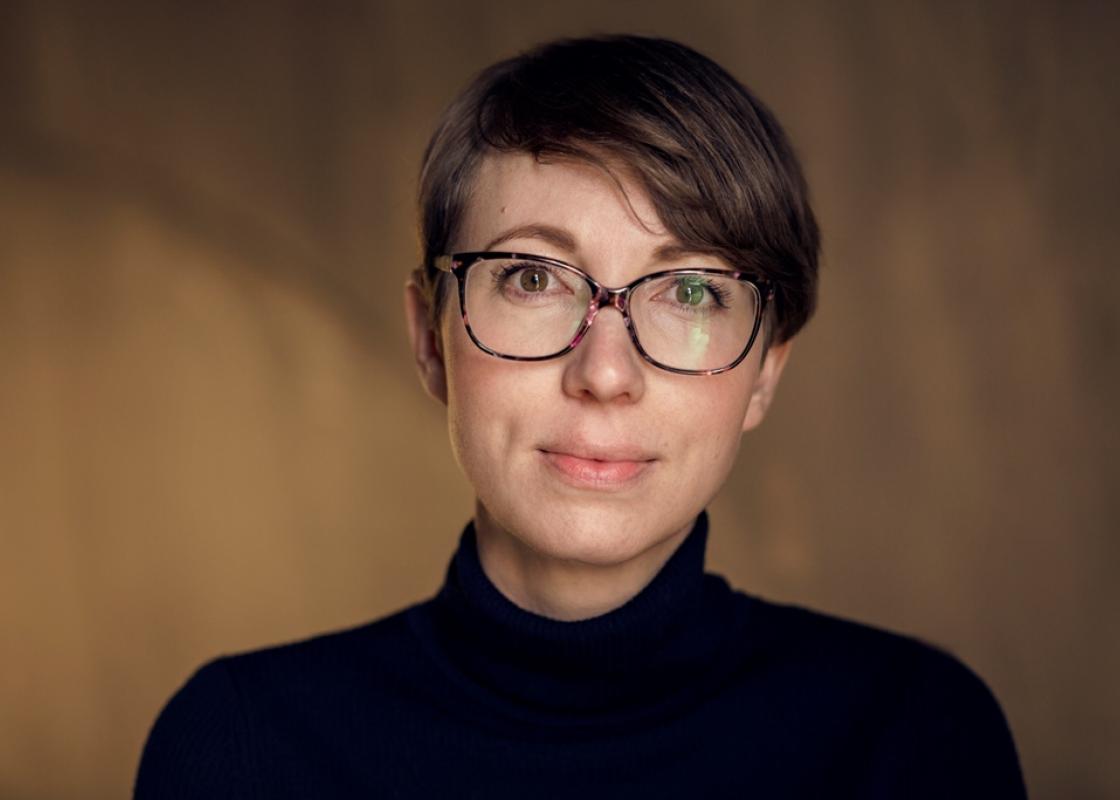“For all the women, it started with their own drug use. By becoming dealers, they were enabled to finance their own drug use. But there were also other factors that made several of them remain in the drug economy.”
Sociologist Heidi Grundetjern recently defended her PhD thesis Dealing with Gender. Unpacking the Variations of Women’s Experiences in the Illegal Drug Economy. In her thesis, she has conducted in-depth interviews with thirty-two female drug dealers in Norway about how they survive in a hard-core, male dominated ‘business’.
Most dealers are men.
“There has been very little research on women’s roles and experiences in this market. And what has been done has often depicted the women as highly marginalised and sexualised, their position being at the bottom of the hierarchies,” says Grundetjern.
“I found much more variation, however, and I wanted to look more closely at some of the patterns. These women portray femininity and masculinity in very different ways.”
“Willing to talk”
Thirty of the thirty-two women she interviewed served time in prison. In many ways, inmates are easy to interview, according to Grundetjern.
“Firstly, they normally have plenty of time to talk to you as a researcher. Secondly, they’re often in a reflective mode where they’ve thought a lot about their lives. It is my impression that it suits them to share their thoughts with someone from outside who are bound to observe professional confidentiality.”
According to Grundetjern, she was particularly lucky, as one of the first women she interviewed later shared her story at a morning meeting in prison.
“She then informed the others about the project and recommended others to participate. She spoke about how important it is with research on women in the drug scene.”
As a result, many from this particular prison wing volunteered as participants.
“It is difficult to tell how many women are involved in drug dealing. Most dealers are men. And if you look at inmates, women make up approximately six per cent of the total number. Approximately thirty per cent of these are serving time for drug related crimes.”
Self-confidence from successful sales
The thirty-two participants were categorised into four different groups. The first group comprised ten women who in many ways appeared the way women in the drug market are traditionally portrayed: As marginalised both within the drug economy and in society in general, with a big drug problem they felt they couldn’t handle. And with plenty of painful emotions that they felt they had to cover up, the drug abuse helped them ease the pain.
For the other twenty-two of Grundetjern’s participants, ‘empowerment’ is a keyword. A sense of being actively able to exert influence on one’s own life, where the relative success they experience in the drug economy enhances their self-confidence. These women were divided into three categories.
They cultivated a kind of ‘street masculinity’.
“The first group comprised eight younger women whose aim and ideal was to be ‘one of the boys’. They were positioned fairly low in the drug economy hierarchy, where they succeeded by copying the men’s dealing strategies through the use of violence to gain respect,” she says.
“They cultivated a kind of ‘street masculinity’. They were also precautious not to have any sexual relations with others within the drug economy in order to avoid being stigmatised as sex objects. Most of them had entered the business at a very young age and had therefore little experience with life outside the drug economy.”
A feminine business model
One group of dealers was far more successful than the others, and they made use of what Grundetjern refers to as a ‘feminine business model’ that was in stark contrast to the female dealers who wanted to be ‘one of the boys’. This group contained eight of the participants, and they were all between the ages of forty and fifty. Another trait they had in common was that they had all began dealing drugs at a relatively late stage, and they therefore had experience from other areas of life. They had lived conventional family lives and had regular jobs before they began dealing. Some of them also had higher education.
“A common reason why they had started dealing was that they were single parents who had ended up in financial difficulties as a result of illness, unemployment or other misfortunes,” says Grundetjern.
“These also emphasised sexual autonomy, but unlike the younger, female dealers, these women gained respect by behaving differently than their male counterparts. They emphasised the importance of being nice to the customers and took responsibility themselves if someone double-crossed them.
Difference feminism
Whereas the two other groups are described in earlier literature as women in male dominated criminal circles, this group, which combines feminine strategies and business aptitude, has received little scholarly attention elsewhere.
“It is particularly interesting in this regard that the women who applied the feminine business model were relatively successful.”
These women express a type of difference feminism, where, by virtue of being women, they see themselves as nicer and more caring than the men. They claim that many customers prefer them as dealers because of this.
Previous studies show women who are either marginalised and sexualised.
“They distance themselves from the masculine ground rules and demonstrate that there is a niche for this type of dealers too,” says Grundetjern.
She ponders whether this is a feminine business model that has bigger chances for success in Norway in particular.
“Previous studies show women who are either marginalised and sexualised or women who often work from home and combine low-scale drug dealing with an ordinary job. But this fairly common feminine business model, where the women are fulltime dealers and gain success through being nice and service minded, seems to work better here. One may speculate whether this is possible due to the Nordic context, and the fact that we have stronger ideals for gender equality.”
At the top of the hierarchy
The last of the three groups of ‘successful’ dealers consisted of the ones with the biggest financial turnover. This group had six participants who all combined feminine and masculine strategies. These shared many similarities with the younger women who wanted to be one of the boys. But they were older, more experienced dealers who were much higher up in the hierarchy. Some of them collaborated with a male partner and had regular customers. Another significant characteristic was that five of these women had children for whom they had daily custody.”
“Making use of flexible gendered strategies and knowing when to make use of which strategy was an important success criterion for them. The women were highly conscious of the fact that the drug market is very male dominated. They were aware that this was a challenge for them as women, especially if they wanted to be at the top of the hierarchy, as was the case with these women,” says Grundetjern.
“Thus on the one hand they wanted to be one of the boys while at the same time they were using feminine strategies to their advantage. For instance, they might flirt in order to obtain services from male dealers, or they would dress up in particular feminine ways because they thought it made it easier for them to fly beneath the police radar.”
Mothers in various ways
Among the thirty-two participants, twenty-four had children, and motherhood became a topic in twenty-one of Grundetjern’s interviews.
“How they managed motherhood corresponded with the strategies they talked about in relation to drug dealing. I was interested in finding out to what extent they identified themselves as mothers and how,” she says.
“Furthermore, I wanted to look at the connection between how they expressed gender and their position in the market. The way they managed motherhood also corresponded with the strategies they used when they were dealing drugs.”
The most successful women in these groups manage to separate work and family life.
The women in the first group, those who did not feel that they were in control of their own drug use, are referred to as ‘the grieving mothers’ by Grundetjern.
“These had children early in life, but they nevertheless had a strong sense of identity as mothers, as it was in line with their strong identity as women. When they didn’t succeed as care persons for their children because of their own drug use, it was an enormous defeat for them, and they began using more drugs as a result,” she says.
“The fact that they strongly identified as women and mothers makes their situation within the drug economy even worse. They used drugs before they became mothers, but they said that the situation got worse after losing custody of the children, and they escaped from the loss by taking drugs.”
This group suffered most under the stigma of not being able to live up to normative gendered expectations.
“Preferably one of the boys”
The women in the second group, the street masculinity group, also often had children when they were quite young. According to Grundetjern, they seemed less devastated by losing child custody than the women in the former group.
“It probably had to do with their identity as ‘one of the boys’ and the fact that the pregnancies were rarely planned. For these women, motherhood was not a central part of their identity,” she says.
“This does not mean that the children were not important to them, rather that they identified less with their role as mothers, and it was therefore easier for them to move on in life and get back to their role as one of the boys in the drug economy.”
According to Grundetjern, not including motherhood as an important part of their own identity was also a way of protecting themselves emotionally from the grief of losing a child.
The women in the third and the fourth group had mostly retained child custody and were successful in combining motherhood and their role as dealers.
“The most successful women in these groups manage to separate work and family life, and they are in many ways the complete opposite of the ‘grieving mothers’ in the first group.”
No women community
But Grundetjern could not find any collaboration between the female dealers.
“First of all they are very few. Secondly, several of them, particularly the women in the street masculinity group, distanced themselves explicitly from other women. They said that women are more gossipy, that they are not to be trusted and so on. In this way, they contribute to maintaining the existing gender hierarchy. The business model women also consider themselves as exceptions from the rule.”
Being in control of your own drug abuse was an important criterion for the successful female dealers.
“It has been emphasised how addiction is a barrier for getting out of the drug scene. But it is much more complicated than that for many people, particularly for the women who experience success as drug dealers,” says Grundetjern.
According to her, the women experience an increased sense of mastering by succeeding within such a rough environment.
“Another point is that this probably applies to women more than to men precisely because of the extra barriers they have to overcome within the male dominated market. The fact that there is a lot of money circulating and much excitement related to what they’re doing is also a motivation for many of them. Seen together, these factors make it hard to give up the business.”
Translated by Cathinka Dahl Hambro.


